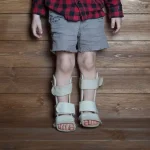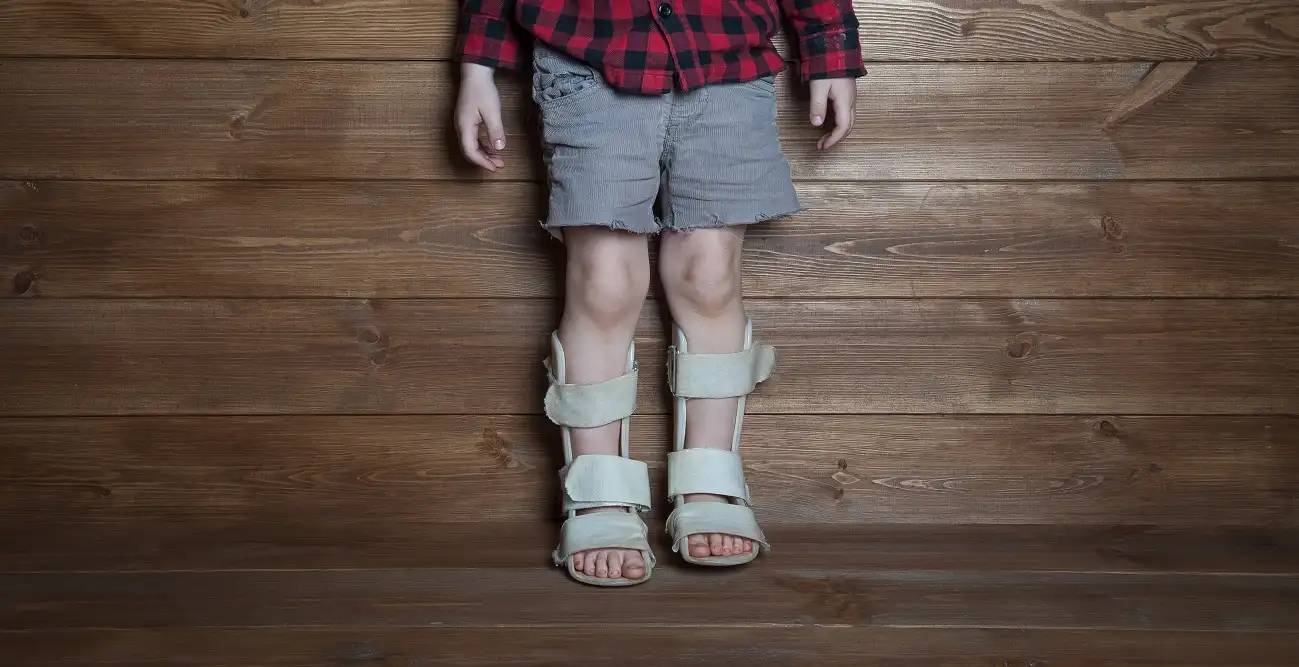Choosing the right lower-limb orthosis can profoundly change how a person stands, walks, and participates in daily life. Ankle-Foot Orthoses (AFOs) and Supramalleolar Orthoses (SMOs) are two of the most prescribed devices, yet they solve different clinical problems and deliver distinct mechanical control. This article unpacks how they’re built, what they do, and when clinicians choose one over the other—backed by the latest material advances and fitting guidelines. You’ll find practical considerations for gait patterns, muscle tone, break-in schedules, and ongoing assessment. When patients and clinicians want quick device comparisons or component options, many clinic portals now include a Go to Page link that consolidates specs, wear schedules, and footwear guidance in one place.
Key Structural Differences Between AFO and SMO Braces
At first glance, both AFO and SMO braces stabilize the ankle-foot complex, but they differ in trimlines, lever arms, and the degree of motion control. An AFO typically spans from below the knee to the footplate, using a long lever arm to control ankle motion and, indirectly, tibial progression and knee mechanics. By contrast, an SMO wraps just above the malleoli (ankle bones), hugging the calcaneus and midfoot to manage frontal and transverse plane alignment without fully restricting sagittal motion. This makes SMOs ideal for flexible foot deformities and medial-lateral instability, whereas AFOs address more pronounced weakness, spasticity, or drop foot. Understanding these structural distinctions is central to any meaningful discussion of AFO vs SMO in clinical practice.
Trimlines, Lever Arms, and Control
The footprint of an AFO—its footplate length, stiffness, and calf shell shape—defines how it influences the ankle-knee system. Posterior-leaf-spring AFOs store and return energy for dorsiflexion assist, while articulated designs with stops or assists set boundaries on plantarflexion and dorsiflexion. Solid AFOs maximize control, useful for crouch or significant spasticity, though they trade some push-off and ankle power for stability. SMOs, with supramalleolar trimlines and deep heel cups, concentrate control around the subtalar and midtarsal joints, improving heel capture and reducing forefoot abduction or excessive pronation. Their low profile preserves more natural ankle excursion, which can be beneficial for children with hypotonia or adults with mild instability who don’t need full sagittal plane restraint.
Material and fabrication choices reinforce these structural themes. Polypropylene and copolymers allow tailored stiffness in AFOs, whereas SMOs often use semi-flexible plastics and padding to balance control with comfort. Carbon-composite AFOs provide high energy return and lightweight durability, a meaningful upgrade for fatigue-prone users. Articulated ankles with adjustable ROM give clinicians a way to “dial in” control as patients progress. Clinically, the AFO vs SMO decision hinges on whether global ankle-knee control is needed or whether targeted hindfoot and midfoot stabilization is enough.
How Orthotic Selection Depends on Gait Pattern and Muscle Tone
Gait pattern and muscle tone tell a precise story about what the limb needs from an orthosis. In toe-walking due to plantarflexor spasticity, an articulated AFO with plantarflexion stop or a solid AFO can block excessive equinus and improve knee extension at mid-stance. For crouch gait, a ground-reaction AFO can help reduce excessive knee flexion by shifting the ground-reaction force anteriorly. In contrast, children with hypotonia and pronation collapse may have adequate ankle motion but poor midfoot stability, making an SMO the more appropriate choice. These clinical signatures frame the everyday question of AFO vs SMO, ensuring device selection supports the biomechanics you’re trying to normalize.
Matching Device Features to Functional Goals
An evidence-informed fitting algorithm starts with observing barefoot gait, then testing with manual support to simulate orthotic control at the hindfoot or ankle. If lifting the arch and centering the calcaneus produces immediate stride symmetry and improved push-off, an SMO may suffice; if tibial progression and foot clearance remain compromised, an AFO becomes more likely. Dynamic tone changes—common in cerebral palsy or post-stroke—call for designs that can withstand peak spasticity without causing skin breakdown, favoring sturdier AFOs with adjustable ROM. Conversely, for mild balance deficits with preserved ankle power, an SMO can restore alignment without blunting natural ankle strategies.
Clinicians also weigh endurance, terrain demands, and footwear constraints. A runner with foot slap may benefit from a carbon AFO that preserves energy return, while a toddler with flexible flatfoot and fatigue might do better in a soft-lined SMO that stabilizes without over-restricting. Testing in-clinic with temporary strapping or trial devices can clarify real-world performance, reducing the risk of over-bracing. This approach bridges the gap between theory and practice, allowing the orthosis to reflect the patient’s specific gait objectives rather than a one-size-fits-all label.
Material Innovations Enhancing Comfort and Flexibility in 2025
Materials have become a decisive factor in orthotic success, especially as users expect lighter, breathable, and longer-lasting devices. Modern AFOs increasingly use carbon fiber composites with variable layups, concentrating stiffness along the strut while allowing controlled flexion at the ankle line for smoother rollover. Advanced nylons (such as PA12) from additive manufacturing provide thin, strong shells with tuned flexibility, enabling intricate lattice padding and localized reliefs around bony prominences. For SMOs, hybrid copolymers paired with silicone or gel interfaces reduce shear and improve compliance in younger wearers or those with skin sensitivity. Together, these innovations make it easier to deliver stability without the weight or bulk that used to limit wear time.
What’s New in Shells, Liners, and Interfaces
Heat-moldable thermoplastic polyurethanes allow chair-side tweaks, a major advantage during growth spurts or rapid tone changes. Breathable liners with moisture-wicking fibers and antimicrobial treatments cut down on odor and skin maceration, supporting longer wear schedules in hot climates. Strategically placed flex grooves and variable wall thickness fine-tune stiffness gradients so that dorsiflexion assistance doesn’t translate into unwanted coronal plane motion. For high-activity users, graphene-enhanced polymers and next-gen carbon weaves are emerging to increase fatigue resistance and reduce micro-cracking at stress risers.
Customization speed has also improved. Digital scanning, parametric design, and multi-material 3D printing shorten turnaround while allowing clinicians to “program” stiffness into key regions. That means an SMO can be soft at the malleoli yet firm at the heel cup, or an AFO can deliver dorsiflexion assist with a compliant footplate for proprioceptive feedback. As clinics update device catalogs, many provide a Go to Page link in patient portals so users can review material options, liner choices, and care instructions before the fitting visit. The result is a more collaborative process where material science translates directly into fit, function, and day-to-day comfort.
Clinical Guidelines for Fitting and Patient Adaptation
Successful orthotic care starts with precise casting or scanning and ends with progressive adaptation, not a single delivery appointment. Weight-bearing alignment during measurement is crucial to translating theoretical control into real-life gait; capturing hindfoot position and forefoot-to-rearfoot relationships avoids unintended pressure points. Shoe selection is equally important: a stable heel counter, removable insole, and adequate depth prevent heel pistoning and accommodate the orthosis. Clinicians should align sagittal and coronal plane goals with trimlines and footplate geometry, then verify in the delivery session with gait observation and in-shoe checks for hotspots. A thoughtful break-in schedule helps the skin adapt and gives the patient time to integrate new proprioceptive cues.
Fit Checks, Break-in Schedules, and Education
A typical break-in plan begins with 1–2 hours on day one, adding 1–2 hours daily as tolerated, and pausing if redness lasts longer than 20–30 minutes after removal. Parents and adult users should perform daily skin inspections, focusing on malleoli, navicular, base of the fifth metatarsal, and calcaneal contours where pressure concentrates. Socks should be seamless, moisture-wicking, and tall enough to cover all contact areas; wrinkles can cause shear and blistering. During follow-ups, clinicians may adjust padding, heat-mold pressure points, or modify strap paths to eliminate edge pressure and improve suspension.
Therapy integration accelerates adaptation. Physical therapists can cue step length, cadence, and ankle strategy changes as the device “re-maps” how the limb loads through stance and swing. For an AFO, this might involve controlled tibial progression and knee extension training; for an SMO, balance and intrinsic foot strengthening often complement the device’s frontal-plane control. Reinforcing donning technique, sock discipline, and shoe selection prevents common pitfalls that shorten wear time. Clear, written care plans make expectations obvious and improve adherence, especially in pediatric and post-neurologic populations.
Monitoring Progress Through Regular Orthotic Assessments
Orthotic care is iterative; measurement, intervention, and reassessment should form a predictable cycle. Early follow-ups—typically at two weeks and six weeks—verify skin tolerance, wear time, and gait improvements against baseline metrics. Objective tools like the 10-Meter Walk Test, Timed Up and Go, and observational gait scales quantify change beyond subjective impressions. Pressure mapping, when available, shows how hindfoot capture or tibial progression has altered loading patterns across the foot. This data-driven approach refines whether a patient remains best served by the initial device or if an adjustment, component upgrade, or transition between AFO vs SMO categories is warranted.
Data, Adjustments, and When to Reconsider the Device
Signs that a revision is needed include persistent toe drag, knee buckling in mid-stance, forefoot abduction that overwhelms an SMO, or skin breakdown despite targeted reliefs. For AFO users, adding or removing dorsiflexion stops, altering strap tension, or adjusting footplate stiffness can dramatically change gait mechanics without a full remake. For SMOs, deeper heel cups, medial posting, or lateral flanges can improve hindfoot control when alignment drifts over time. Wear-time sensors and patient-reported outcome measures help bridge in-clinic performance with real-world experience, revealing whether a device is used as intended and for long enough to matter.
Communicating results in plain language empowers patients and caregivers to participate in decision-making. When clinics publish progress dashboards, a simple Go to Page prompt in the patient portal can centralize test results, photos of skin checks, and next-visit goals. This transparency reduces uncertainty and sustains motivation during the adaptation curve. Regular assessments also create a documented trail for payers, supporting medical necessity when replacements or component upgrades are indicated.
The Role of Multidisciplinary Teams in Mobility Optimization
Orthotic success rarely rests on the device alone; it emerges from coordinated work across disciplines. Orthotists translate clinical findings into mechanical solutions, while physical therapists shape gait training and strength programs that complement the device. Physicians and advanced practice clinicians set medical priorities—spasticity management, surgical timing, or pharmacologic support—that influence how much control the orthosis must deliver. Occupational therapists extend functional carryover to ADLs and school or work tasks, ensuring skills don’t stay confined to the clinic. This shared framework helps the team decide when a patient needs comprehensive control versus targeted stabilization, a recurring theme in the AFO vs SMO conversation.
Communication, Care Pathways, and Family Engagement
Clear referral notes and structured feedback loops keep the team focused on functional goals like community ambulation, fall reduction, or endurance for school participation. Case conferences can streamline decisions about switching from an SMO to an AFO as tone increases, or trialing an articulated ankle to reintroduce controlled motion after a period of immobilization. Families and caregivers are integral; they monitor skin, maintain wear schedules, and advocate for comfort, making their observations as valuable as lab-based gait data. Educational handouts, short video guides, and after-visit summaries make complex instructions memorable and actionable.
Access and equity also matter. Telehealth gait check-ins reduce travel barriers, and school-based therapy coordination keeps momentum between clinic visits. When resources are centralized, a portal-based Go to Page index can point users to device care, sock selection, warranty details, and appointment scheduling without sifting through emails. The result is a cohesive, patient-centered pathway where materials, mechanics, and rehabilitation converge to produce stable, efficient movement—day after day, terrain after terrain.




















